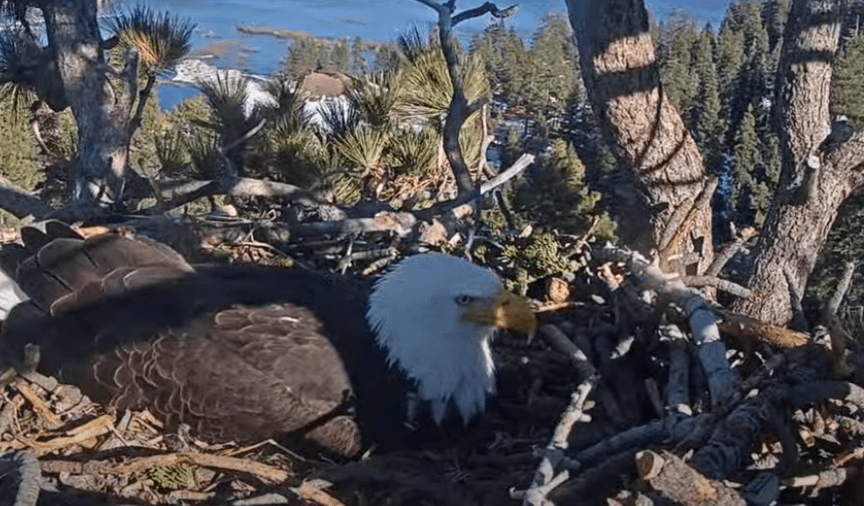The countdown has begun for the hatching of three bald eagle eggs in California’s Big Bear Valley, with a live webcam view available on YouTube.
The hatching was initially expected to start around 4:55 p.m. Feb. 29, according to the nonprofit Friends of Big Bear Valley, who provide live updates on social media, but the moment came and went with the eggs still intact.





